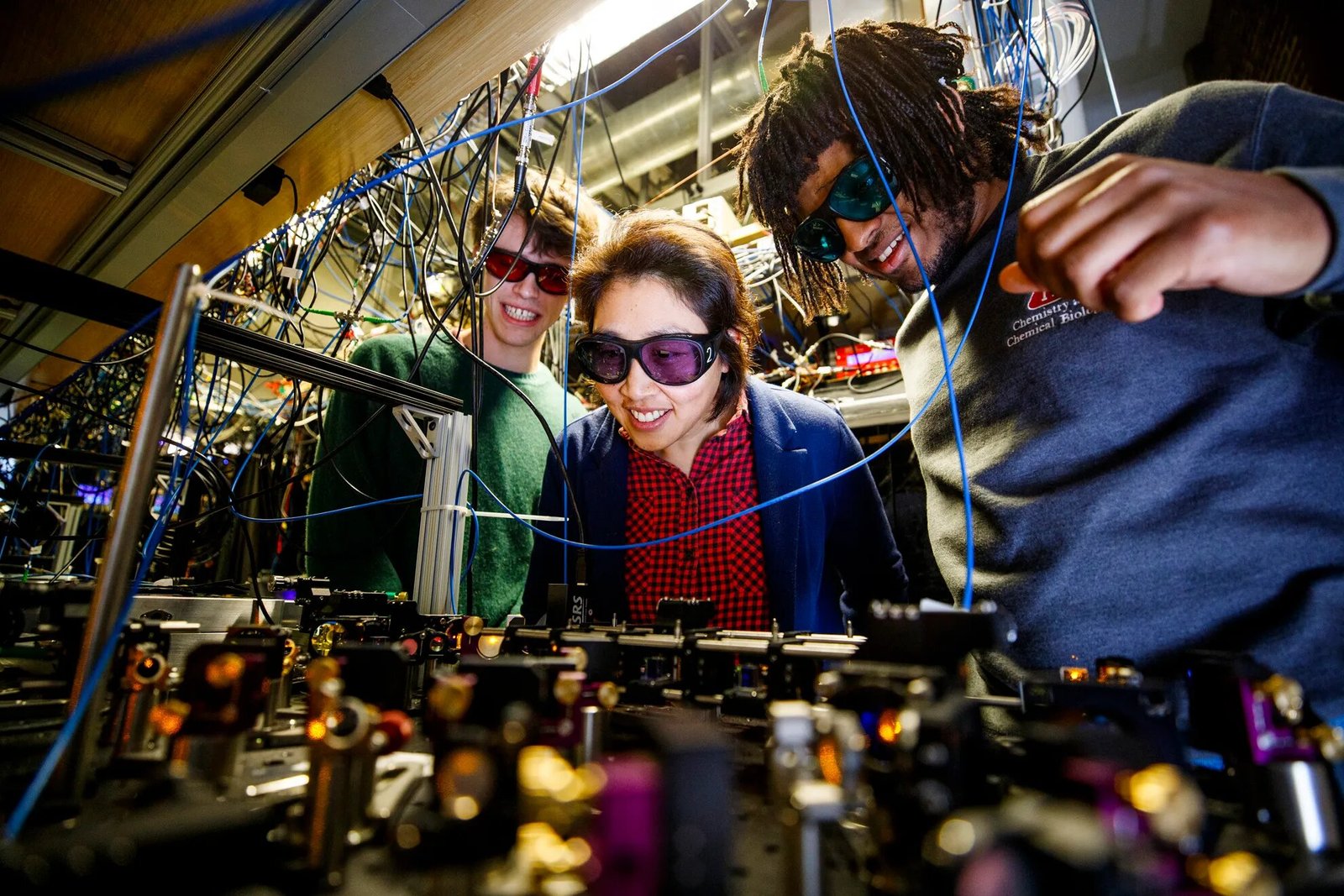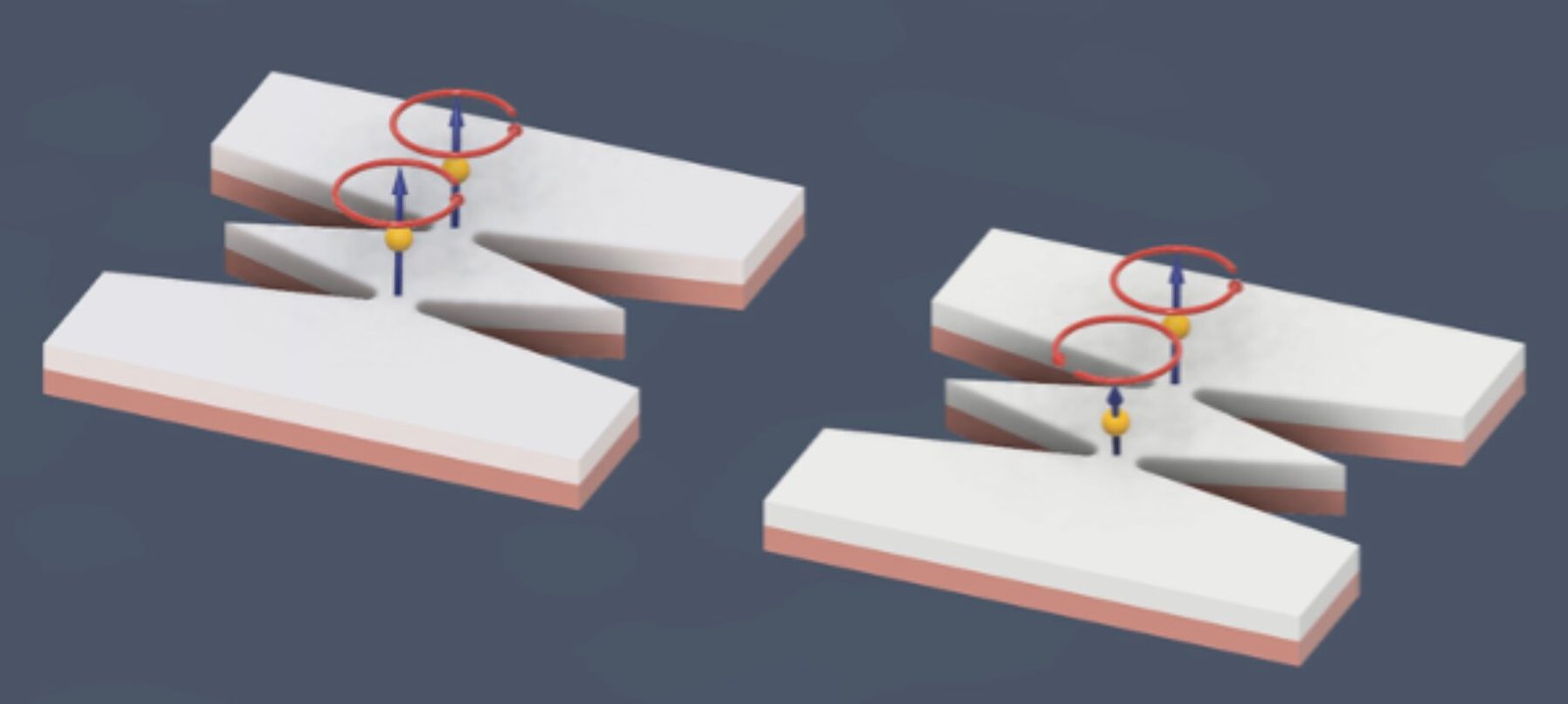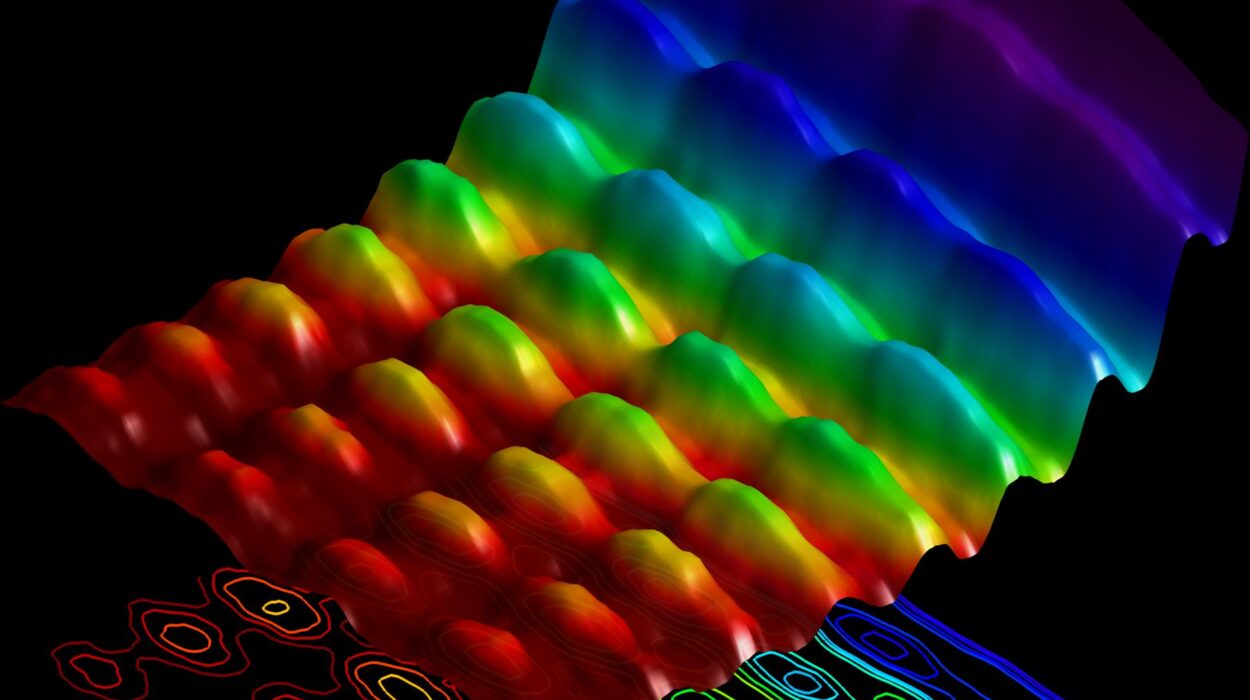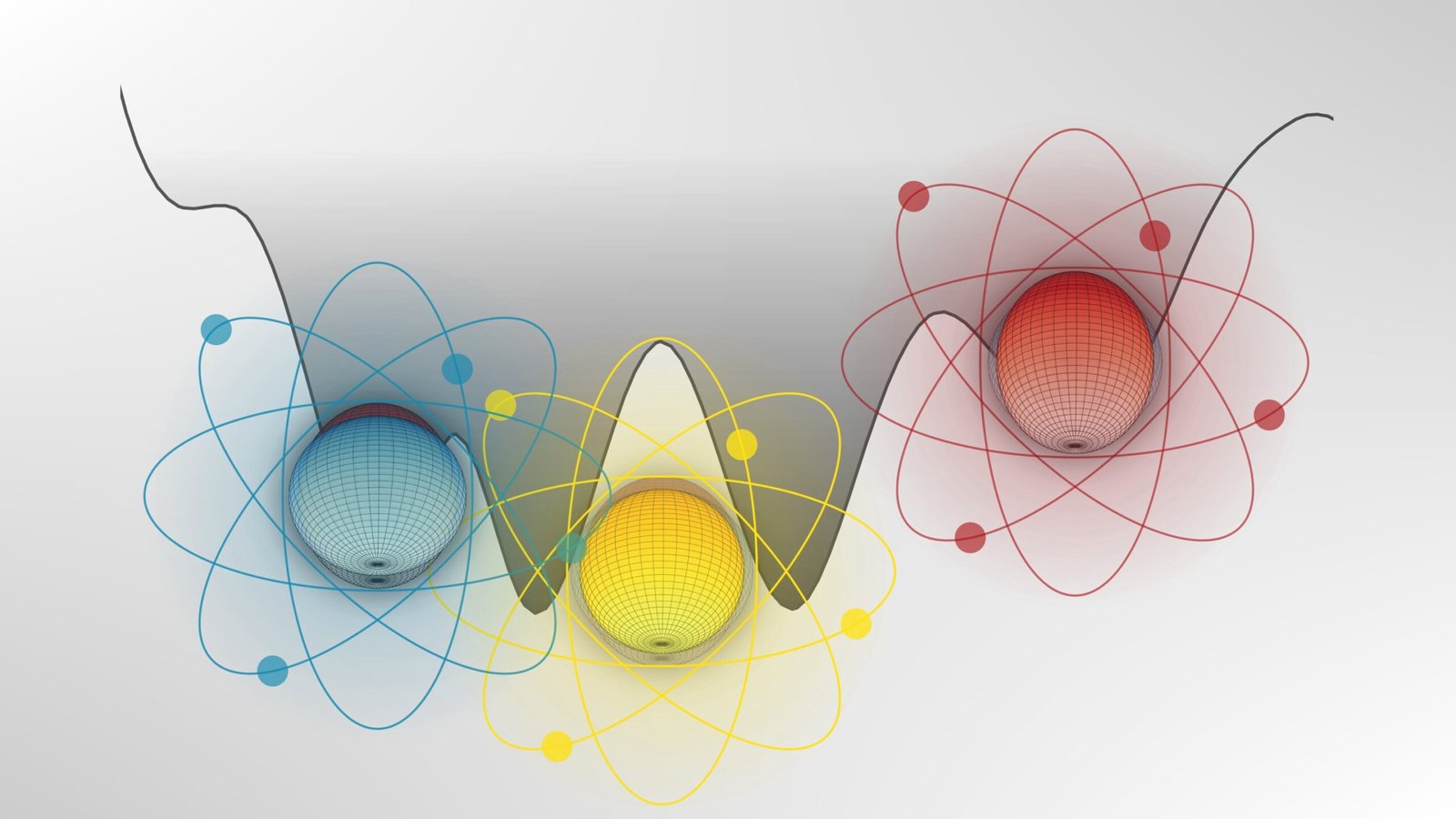Quantum computing has long been a field dominated by ions, neutral atoms, and superconducting circuits, where experiments have demonstrated remarkable potential. These quantum systems form the bedrock for what many believe will lead to the next evolution in computational power—speeds that surpass those of classical computers exponentially. However, for decades, one significant frontier remained untapped: molecules. The rich internal structures of molecules were once viewed as too complex, delicate, and unpredictable to harness for quantum operations. This perceived obstacle led to quantum experiments focused on much smaller, simpler systems.
Recently, however, an innovative breakthrough by scientists from Harvard University has defied those doubts. For the first time, a team has successfully trapped molecules and used them as qubits—the fundamental units of quantum information. This achievement, detailed in the esteemed journal Nature, marks an exciting leap toward using the unique properties of molecules for quantum computing—with far-reaching applications across science, technology, and beyond.
The Quantum Landscape: Beyond Bits to Qubits
Traditional classical computers rely on bits as their basic units of information. A bit can exist in one of two states: 0 or 1. Logic gates manipulate these bits to perform computations. In contrast, quantum computers use qubits, which leverage the laws of quantum mechanics—a field that governs the behavior of the subatomic world. Unlike classical bits, qubits can exist in multiple states simultaneously through a phenomenon called superposition. This capability enables quantum computers to process information exponentially faster and solve problems that are currently beyond the reach of classical computing.
Furthermore, qubits can become entangled—a uniquely quantum phenomenon where the states of two or more qubits become so deeply interconnected that the state of one can affect the other, even across great distances. This entanglement is crucial for creating powerful quantum gates that manipulate qubits in ways classical gates cannot. These operations, which form the backbone of quantum computing, allow quantum computers to exploit the complex potential of quantum mechanics, paving the way for breakthroughs in fields such as medicine, cryptography, artificial intelligence, and financial modeling.
For several decades, quantum engineers have struggled with creating stable, controllable qubits, often resorting to subatomic particles like ions and atoms. The realization that molecules—complex systems made of atoms bonded together—hold immense potential for quantum computing but come with a host of complications, marked a pivotal challenge in the field.
The Harbingers of Molecular Quantum Computing
A team of researchers at Harvard University, led by Kang-Kuen Ni, professor of chemistry and physics, has now defied the barriers and successfully demonstrated that polar molecules can be used as quantum bits. Ni, who has been pushing the boundaries of molecular quantum computing for years, stated, “As a field, we have been trying to do this for 20 years. And we’ve finally been able to do it.”
What sets this achievement apart is not just the use of molecules but the team’s ability to make them stable enough for quantum operations. By exploiting ultra-cold polar molecules, the researchers were able to control the internal structure of molecules in a manner never achieved before in quantum computing experiments. These molecules can now perform operations with remarkable precision, addressing the stability and coherence issues that plagued earlier attempts.
Using Optical Tweezers to Trap Molecules
The breakthrough began with a deceptively simple concept: trapping molecules in a ultra-cold environment using a technology known as optical tweezers. These lasers focus intense light at microscopic levels to precisely manipulate objects. In the case of the Harvard team’s work, they used the optical tweezers to trap sodium-cesium (NaCs) molecules, cooling them down to almost absolute zero. At these temperatures, the molecules move more slowly and are less prone to thermal fluctuations, creating the right conditions for their quantum states to be manipulated.

At ultra-cold temperatures, the internal structure of molecules—including their nuclear spins—becomes stable and predictable, overcoming one of the major obstacles that had traditionally limited the potential of molecules for quantum operations. Instead of allowing the molecules to vibrate uncontrollably, the lasers prevented significant motion by trapping the molecules in well-defined, low-energy states. The energy of these molecules could now be manipulated without the risk of random changes disrupting quantum coherence.
The Quantum Magic: Entangling Molecules and Creating Logic Gates
With the molecules successfully trapped, the team sought to perform quantum operations using their dipole-dipole interactions—a special property that occurs when the positive and negative ends of two polarized molecules interact. In simpler terms, these interactions allow the molecules to influence one another’s behavior, which is a necessary condition for performing quantum operations.
The ultimate goal was to construct an iSWAP gate, which is a specific type of quantum logic gate used to swap the states of two qubits and apply a phase shift—a critical step for creating entanglement between qubits. Entangling two molecules in this way is crucial because it demonstrates that their states are inextricably linked, even over large distances, a feature that unlocks quantum computing’s massive potential for simultaneous calculations and complex problem-solving.
Through careful control of the molecular rotation and by leveraging the quantum mechanics of spin and dipole interactions, the research team successfully created a two-qubit Bell state with an impressive 94 percent accuracy—a measure of how precisely they could entangle the molecules to execute a quantum operation. This result, while just one aspect of their work, is seen as a critical achievement, demonstrating that molecules—traditionally seen as too complicated for reliable quantum computing—can now be incorporated into the fabric of quantum computation.
The Promise of Molecular Quantum Computing
As any seasoned quantum physicist will tell you, quantum systems rely heavily on maintaining coherence, a delicate quantum state in which all particles within a system remain synchronized, essential for any successful quantum computation. Unlike classical bits, which are relatively stable and unchanging, qubits are prone to quantum decoherence—a phenomenon where quantum information is lost due to interaction with the outside environment. Molecules, with their rich internal structures, were thought to be far too unpredictable to preserve coherence over long periods.
However, the Harvard team’s ability to trap molecules in a stable state using lasers to minimize movement and control their internal interactions marks a potential turning point for quantum computing. The team believes this breakthrough opens the door for exploiting the unique characteristics of molecular systems, such as their complex nuclear spins and vibrational modes, to develop even more powerful and scalable quantum technologies.
According to co-author Annie Park, a postdoctoral fellow at Harvard, “Our work marks a milestone in trapped molecule technology and is the last building block necessary to build a molecular quantum computer.” By unlocking the potential of molecular systems for quantum operations, scientists now have an expanded toolkit that could push the boundaries of what quantum computers can achieve.
Future Prospects: Expanding the Possibilities
With the successful demonstration of two-qubit operations, future experiments will likely focus on extending this work to more molecules, more qubits, and more complicated quantum gates, all while refining the process for stability and precision. The next challenges will involve reducing the errors induced by molecule motion and leveraging the full power of complex molecular structures to create large-scale quantum circuits capable of tackling real-world computational problems.
“There’s a lot of room for innovations and new ideas about how to leverage the advantages of the molecular platform,” Ni noted, hinting at future developments that could bring even more progress in the quantum computing landscape. With this significant breakthrough, molecular quantum computing has entered a new phase, pushing the field closer to the reality of molecular-based quantum processors.
Conclusion
Molecular quantum computing is no longer a distant dream—it is a rapidly advancing field poised to reshape our technological future. As Harvard’s team explores the enormous potential of trapping and manipulating molecules for quantum operations, they open up possibilities previously thought beyond reach. The unique properties of molecules, combined with advances in ultra-cold physics and precision control, offer a promising foundation for next-generation quantum computers. As further research builds upon this foundation, the hope for truly scalable and reliable quantum computing becomes increasingly attainable. The breakthrough by the Harvard team is, indeed, a major step forward in realizing the dream of a powerful molecular quantum computer capable of transforming every area of human life.
Reference: Lewis R. B. Picard et al, Entanglement and iSWAP gate between molecular qubits, Nature (2024). DOI: 10.1038/s41586-024-08177-3






